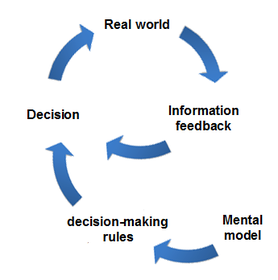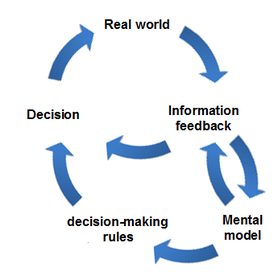A learning loop is a simplified framework of how people learn from experience - it’s a simplified model of how our brain works. There are versions of learning loops everywhere - from self improvement frameworks to product development. Being intentional about our learning loops (and improving them) has wide ranging benefits.
In it’s simplest form, the learning loop is a single loop. It is the cycle of decision making to execution to learning, which then informs future decisions. Decisions are also informed by our mental models and decision frameworks.

A double learning loop connects the learning step (“information feedback” in the diagram above) to the mental models. In double loop learning, the mental models and frameworks we use changes depending on our learning. Essentially, we don’t blindly follow a singular framework to execute anything, but modify it based on a situation. I like this as a way to articulate how a latticework of mental models is built and used.

The concept of double loop learning was described by Chris Argyris, in a simple analogy:
A thermostat that automatically turns on the heat whenever the temperature in a room drops below 68°F is a good example of single-loop learning. A thermostat that could ask, “why am I set to 68°F?” and then explore whether or not some other temperature might more economically achieve the goal of heating the room would be engaged in double-loop learning
I’ve written about some of the steps in the loop in various contexts:
- I wrote about mental models as the simplified concepts and frameworks we use to better understand how the world works
- I’ve written about habits of reflection in a personal productivity context
In future posts, I’ll go through the steps of decision making and execution (“real world” in the diagram), with a focus on providing some specific frameworks that can be used in each stage.